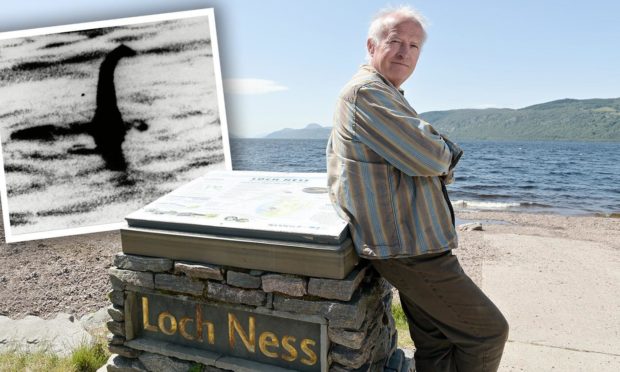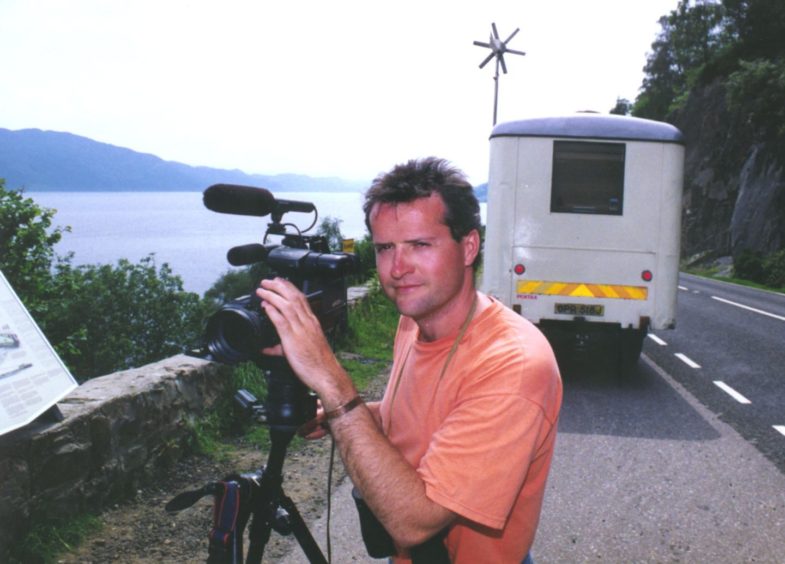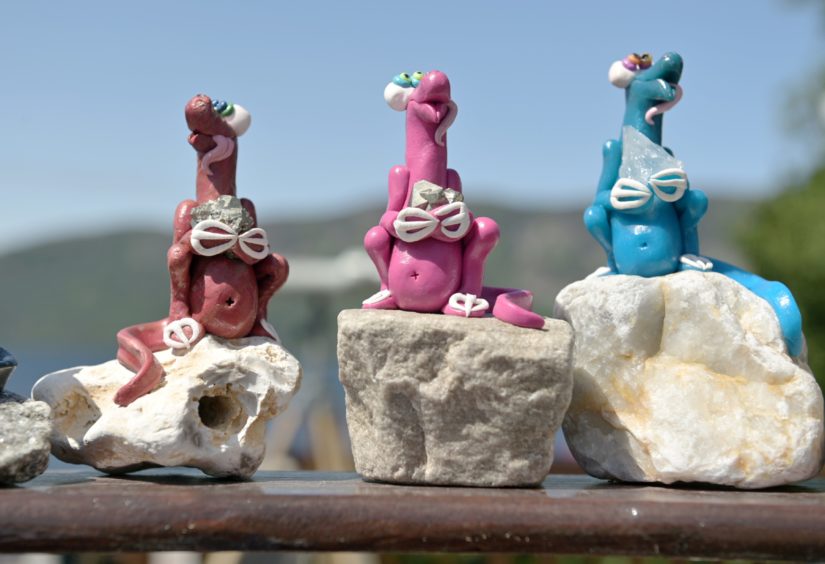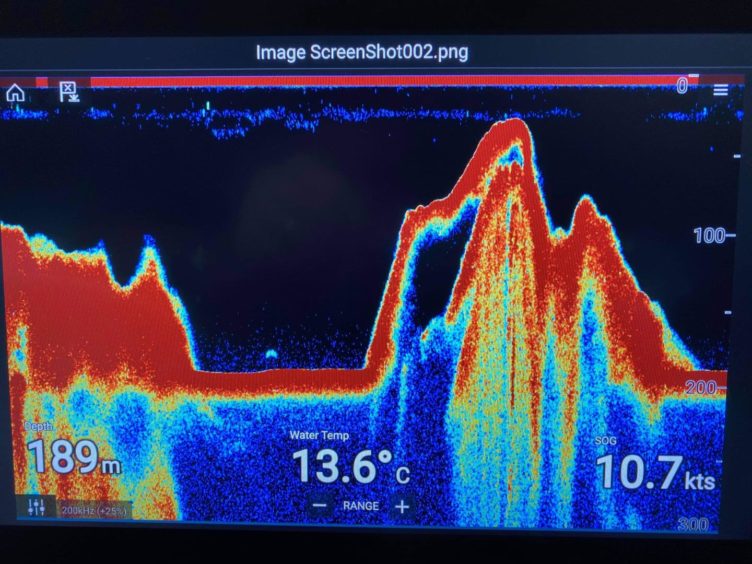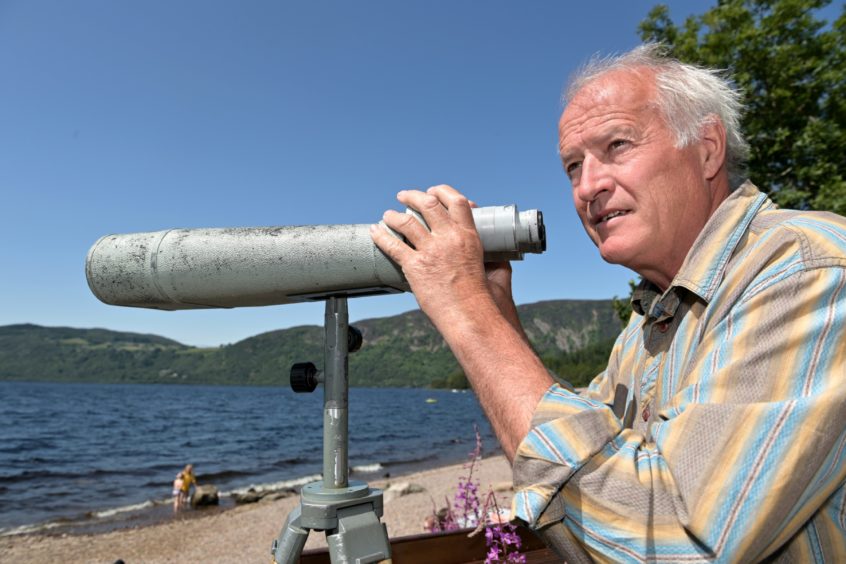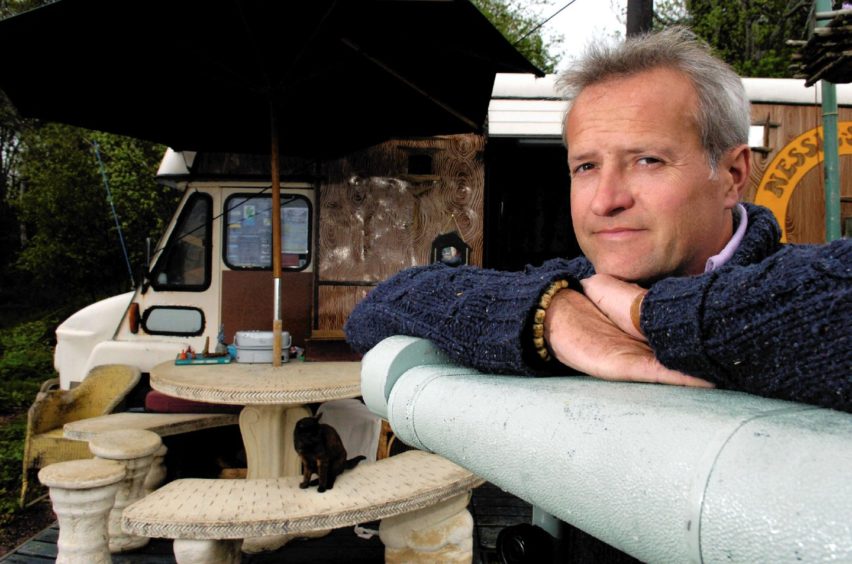He may not have solved the mystery yet, but one thing proven beyond doubt is that Steve Feltham is a very patient man.
Tomorrow marks three decades since he packed up his life in Dorset – leaving his girlfriend, house and job behind – to take up hunting for the Loch Ness monster full-time.
Looking back, he has no regrets.
And his enthusiasm about the possibility of solving one of the world’s most enduring mysteries remains as strong as ever.
“The odds are stacked against one man sat on a beach with a pair of binoculars,” he said. “You’ve only got to look the wrong way.
“But I don’t mind the extreme odds against me. I still love the possibility that it’s just going to happen suddenly.”
Becoming the Nessie Hunter
Steve may have started his full-time search on July 18, 1991, but the seed was planted much earlier.
His fascination began during a family holiday to the Highlands in 1970, when he was seven years old.
The Loch Ness Investigation Bureau was based at Urquhart Castle at the time and the idea of grown men looking for monsters in a loch sparked his interest.
He instantly thought he had found his calling.
And that passion never left him.
More family holidays up north prompted more reading, researching and dreaming about adventures.
But by the age of 28, Steve was firmly lodged in the rat race.
He’d joined his father in successfully setting up a company that sold burglar alarms.
It gave him a chance to earn some serious cash but it wasn’t long before he started to think something was missing from his life.
Steve said: “I came to a crossroads. I was thinking ‘what do I want to do with my life?’.
“Should I settle down, have kids, get married, and all the rest of the normal nine-to-five behaviour?
“Or do I want an adventure? And if I do, what sort of adventure do I want?
“For me, it was always about the Loch Ness monster.”
‘I am a free man doing exactly the thing I love’
Steve made the trip north in a 20-year-old mobile library van.
A BBC programme, Desperately Seeking Nessie, was aired about him in August 1992 – a year into his adventure.
In the late 1990s, his van failed its MOT and he converted it into a static home.
Since then, he’s been based in the Dores Inn car park, which backs out onto the beach.
It has no running water or electricity, but the pub has an outside tap and car batteries charged by a solar panel allow him to run his lights, radio and laptop.
He funds his lifestyle by selling miniature Nessie models, made out of modelling clay.
This time of year can get exceptionally busy at Dores beach, so if it gets too much for Steve he’ll pack up and find himself a quieter spot to keep watch.
He said: “I am a free man doing exactly the thing I love doing.
“I’m not trying to show the world ‘here’s the final proof that solves the mystery’, I’m addicted to the chase.
“I’m addicted to finding the new pieces of evidence. That’s what keeps me going, that adventure.”
The highs and lows of searching for the Loch Ness monster
Along the way, there have been plenty of highlights for Steve.
A recent sonar image discovered by Steve’s friend Ronald Mackenzie in October 2020 is right up there.
Ronald, the managing director of Cruise Loch Ness, spotted an unusual object on his radar while out on his boat.
Steve called it the “most compelling” evidence of Nessie he’d ever seen.
He said: “Ronald called me up and said ‘you won’t believe it’. It’s the best piece of evidence I’ve ever seen from Loch Ness.
“This blob, about the size of a transit van, 600ft down in the loch.
“There was something massive under that boat. Things like that still drive my passion forward.”
Exposing hoaxes
At the other end of the scale, the news that the world-famous “surgeon’s photograph” was a hoax in 1994 was a notable low point.
Taken by Colonel Robert Wilson in 1934, the image showed the slender neck of a serpent rising out of Loch Ness.
For decades it was considered the best evidence ever obtained of the existence of the monster.
I’m addicted to finding the new pieces of evidence. That’s what keeps me going, that adventure.”
It was later revealed to be a toy submarine fitted with a sea serpent head when one of the men involved in creating the photo revealed the hoax on his deathbed.
Steve spends a fair bit of time disproving pictures and theories himself.
He said: “What surprises me now is I’ve become a filter. People bring photos and video to me.
“Very often it’s a misidentification of a mundane event. I can let those people down gently and keep that out of the public domain.
“You do get some people deliberately trying to hoax. When that happens and something’s not quite right, I’m like a dog with a stick.
“I will not let it go until I get to the bottom of it. I ended up exposing a few fakes and I never realised that would become part of my occupation.”
‘If you don’t follow your dreams, the only person who loses is you’
One thing that has remained constant throughout Steve’s 30 years at Loch Ness, is his belief that people need to follow their dreams.
People still approach him and tell him they’ve turned their life upside down because they were inspired by him.
But does he have any regrets?
Steve said: “I left when I was 28, but I think I probably could’ve left when I was 26.
“From the day I arrived, I’ve never regretted a single thing.
“When I do reach my deathbed, I don’t want to say I wish I’d tried to do this.
“I’d hate that regret far more than trying and failing.
“If you don’t follow your dreams, the only person who loses is you.”
